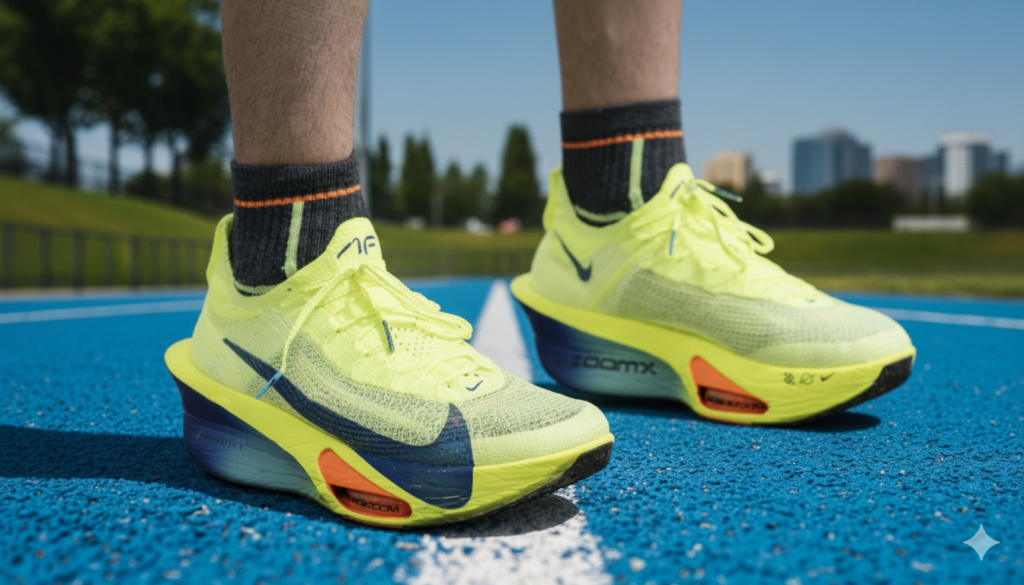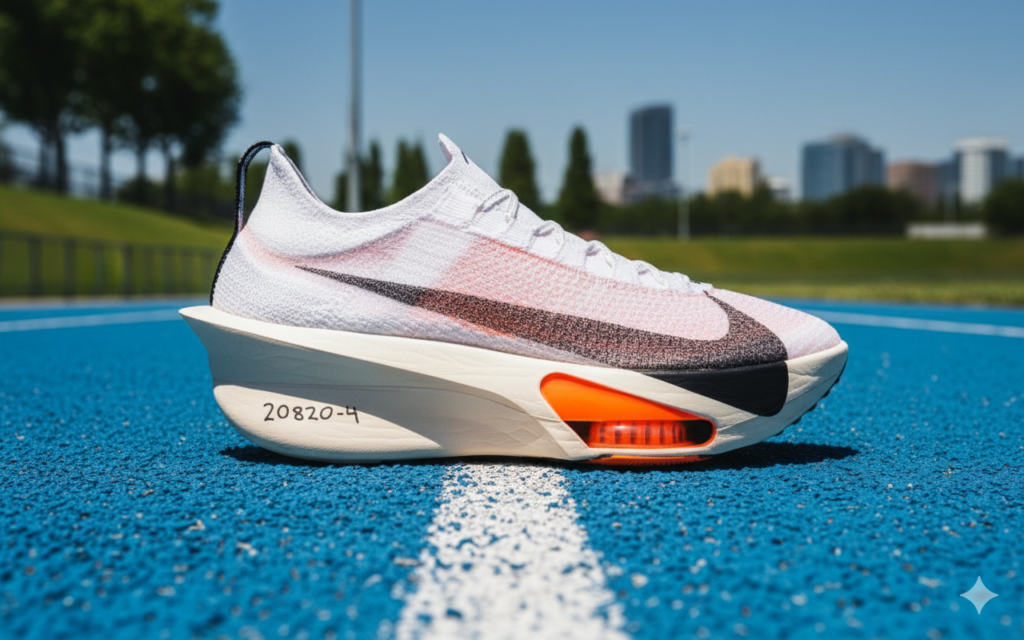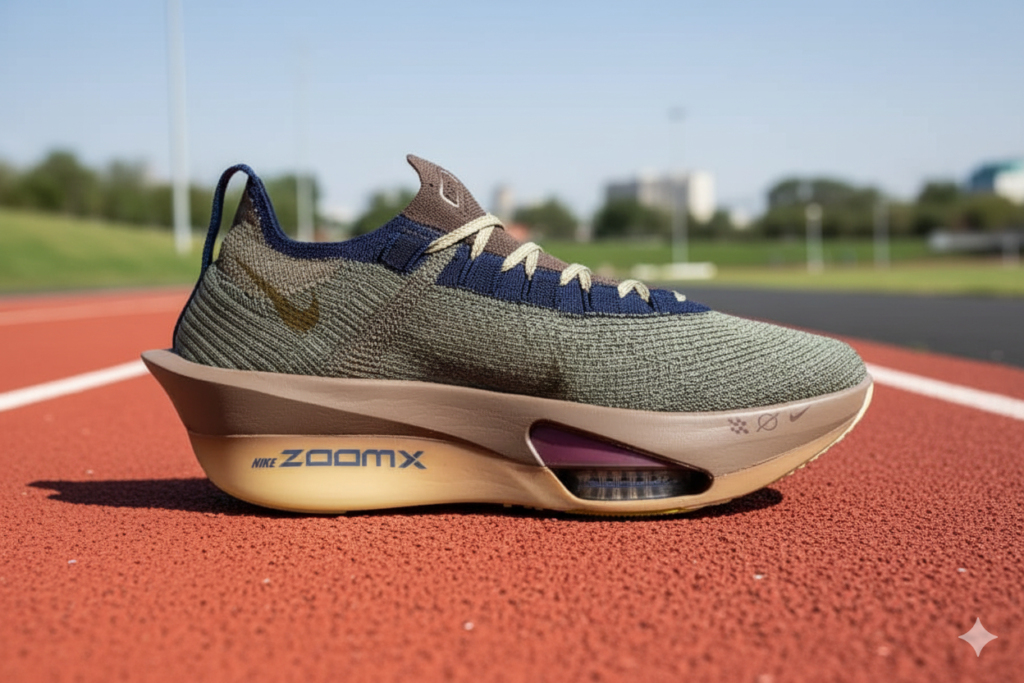The Nike Alphafly 3 is one of the most talked-about running shoes in recent years. Built for speed, endurance, and efficiency, it represents Nike’s continued effort to push the boundaries of sports technology. Within the first few steps, runners can feel how this shoe transforms energy into forward motion. That’s why marathoners, competitive runners, and serious enthusiasts all want to know what makes the Alphafly 3 stand out.
Nike designed this shoe not only for professionals chasing world records but also for athletes who want to achieve their personal best. With advanced cushioning, energy return, and lightweight construction, the Alphafly 3 is a game-changer in the running world.
The Origins of the Alphafly Line
The Alphafly story began with the Nike Vaporfly, a shoe that shook the running industry. Eliud Kipchoge famously wore a prototype during his historic sub-two-hour marathon attempt. That success led to the Alphafly NEXT% and Alphafly 2, both of which became popular among professionals.
The Nike Alphafly 3 is the next evolution. Instead of just tweaking small details, Nike reimagined how the shoe should work with a runner’s stride. The result is smoother transitions, better stability, and longer-lasting comfort.
A Shoe Built on Science
What separates the Alphafly 3 from traditional running shoes is science. Nike’s team studied biomechanics, energy loss, and oxygen consumption during long runs. By analyzing thousands of data points, they crafted a shoe that optimizes every step.
This shoe doesn’t just cushion impact. It actively reduces wasted energy, turning each landing into forward motion. That scientific precision is why many call it the most advanced marathon shoe ever made.
Midsole Magic: ZoomX Foam Advantage
At the heart of the Nike Alphafly 3 lies ZoomX foam. Known for its lightweight feel and explosive energy return, ZoomX has become a signature feature in Nike’s performance line.
For marathoners, conserving energy is essential. ZoomX foam provides soft cushioning while returning maximum power with each stride. Runners describe it as running on springs—light, responsive, and incredibly efficient.
This balance of cushioning and responsiveness helps delay fatigue, especially during the final stretch of a race.
The Carbon Plate Revolution
Another secret to the Alphafly 3’s success is its full-length carbon fiber plate. Unlike older stiff plates, this one is tuned for smoother transitions.
The plate works with ZoomX foam to create a rolling effect, guiding the foot naturally forward. It’s stiff enough to boost propulsion but flexible enough to avoid discomfort. This balance makes the Alphafly 3 useful not just for elites but also for experienced amateurs.
Upper Perfection: Atomknit Comfort
Nike introduced Atomknit in earlier models, but the Alphafly 3 takes it to another level. This lightweight, breathable upper hugs the foot while allowing airflow.
The material adjusts to different foot shapes, ensuring a snug fit without tightness. The updated lacing system locks the foot down securely, preventing slips even at high speeds.
Runners often worry about blisters during long races. The Alphafly 3’s breathable fabric reduces heat and moisture, keeping the feet fresh mile after mile.
Outsole Durability and Traction
One of the criticisms of earlier Alphafly models was durability. Nike addressed this in the Alphafly 3 by reinforcing the outsole with stronger rubber.
The grip pattern offers traction on multiple surfaces—track, asphalt, and even wet roads. At the same time, Nike minimized unnecessary weight, keeping the shoe light for racing conditions.
This means the Alphafly 3 not only performs during races but also holds up through long training cycles.
How Elite Athletes Shaped the Alphafly 3
Nike didn’t just design this shoe in a lab. They tested it with elite marathoners, including Eliud Kipchoge and Brigid Kosgei. Their feedback shaped the final version.
Athletes wanted smoother transitions, improved breathability, and more stability on uneven terrain. Nike listened, and the Alphafly 3 reflects those refinements.
The result is a shoe that feels fast yet controlled—something that matters when fatigue sets in during the late stages of a marathon.
Running Economy: The Hidden Benefit
One of the biggest advantages of the Nike Alphafly 3 is its effect on running economy. Running economy measures how efficiently a runner uses oxygen at a given pace.
Independent studies have shown that carbon-plated shoes with responsive foam can improve running economy by up to 4%. That may sound small, but in marathons, it can mean several minutes off finishing times.
For competitive runners, this efficiency boost is often the difference between a podium finish and just another race.

Accessible Beyond World-Class Athletes
Although the Alphafly 3 was designed with professionals in mind, it’s not reserved for them alone. Many experienced hobby runners and serious amateurs have adopted it.
Its cushioning reduces strain on the legs, while its responsiveness makes even training runs feel smoother. For athletes chasing personal records, the Alphafly 3 provides a noticeable edge.
Even if you’re not chasing Olympic dreams, this shoe can make your running journey more enjoyable and less fatiguing.
Price Tag and Value for Money
The Nike Alphafly 3 comes with a premium price, usually around $275–$300. For casual joggers, that might seem steep. But for runners who train seriously, the investment often pays off.
Think of it like a cyclist buying a high-performance bike. The Alphafly 3 is a tool designed to maximize efficiency, prevent injuries, and improve results. For athletes with big goals, it’s worth every dollar.
Sustainability and Eco-Conscious Design
Nike’s Move to Zero initiative is also visible in the Alphafly 3. Some of its components use recycled materials, reducing waste without compromising performance.
This effort shows that high-tech shoes can also be eco-friendly. For athletes who care about performance and the planet, the Alphafly 3 aligns with both values.
Training vs. Racing in the Alphafly 3
Some runners wonder if the Alphafly 3 is only for race day. While it shines in marathons, many athletes also use it for key training sessions.
Its cushioning makes long runs less taxing, and its propulsion benefits make speed workouts more effective. However, because of its price and advanced features, most runners save it for races and specific workouts rather than daily training.
Comparisons: Alphafly 3 vs. Competitors
The Alphafly 3 is often compared with shoes like the Adidas Adios Pro 3 and Saucony Endorphin Elite. While all offer carbon plates and responsive foam, Nike’s Alphafly 3 stands out for its combination of comfort, propulsion, and proven race results.
Many professionals who tested multiple brands still choose Nike because of the Alphafly’s consistent performance in world-class races.
User Experiences and Reviews
Feedback from everyday runners has been overwhelmingly positive. Many report feeling less fatigue in the later miles of long runs. Others highlight how the shoe feels light but powerful, with each stride pushing them forward.
The most common praise is how the Alphafly 3 blends comfort with speed. Unlike some racing shoes that feel harsh, this one provides cushioning without sacrificing energy return.
Conclusion: The Pinnacle of Running Innovation
The Nike Alphafly 3 is more than just a shoe—it’s a revolution in running footwear. With its ZoomX foam, carbon plate, Atomknit upper, and athlete-driven design, it redefines what runners can expect from marathon shoes.
For elite athletes, it offers the competitive edge needed for record-breaking performances. For dedicated amateurs, it delivers comfort, efficiency, and speed that make running more rewarding.
In today’s running world, the Nike Alphafly 3 is not simply an option—it’s the gold standard of performance footwear.

FAQs
Q1: Is the Nike Alphafly 3 good for beginners?
It’s best for experienced runners. Beginners may find it too advanced and expensive for casual runs.
Q2: How long does the Nike Alphafly 3 last?
Typically 250–400 miles, depending on training intensity and running surfaces.
Q3: Can I train daily in the Alphafly 3?
It’s better for races and key workouts. Daily use may wear it out faster.
Q4: Why is the Nike Alphafly 3 so expensive?
The price reflects its advanced technology, carbon plate, and premium materials.
Q5: Does the Alphafly 3 improve race times?
Yes, its design improves running economy, which often leads to faster performances.
Read Also : Dyson Airwrap Dupe: Affordable Alternatives Explained Simply

